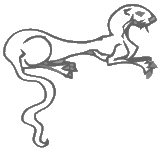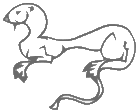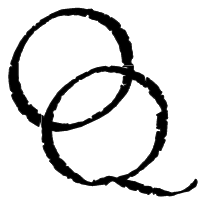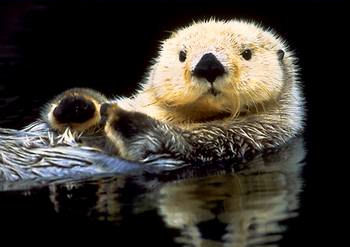 |
 |
 |
 |
 |
 |
 |
 |



Sea
Otter -------------------------
Size: The sea otter is 67 to 163 cm long from nose to tail, the tail alone is 12.5 to 33 cm long. Males weigh up to 45 kg. Color:
The sea otter's body is brown, with a light tan head, cheeks,
and throat, and an even lighter belly. Nose: Aspen leaf shape. Females have a pink scar
on their nose after mating. Feet: Sea otters have small, but very strong forepaws.
The rear paws are so elongated and webbed that they are like flippers. The
claws are semi-retractable. Hair: Very thick, silky, and sleek. The guardhairs are 3.4 to 3.6 cm long, the underhairs are 19 to 20 mm. There are over 1,000,000 (yes a million!) hairs per square inch. They have very sensitive whiskers. Track/Sign: N/A
Ecology Habitat: Generally near kelp beds along the Pacific coast of North America Range/Distribution: Pacific coast of North America, some found on the coast of Russia and Japan.
In the 1800's and early 1900's, sea otters were hunted almost to extinction for their pelts on the coasts of Russia, Alaska, and California. By the time protective measures were put in place, there were fewer than 2,000 sea otters in the world, and their range was greatly reduced. Sea otter populations have been rising steadily, but slowly, since the mid 1900's. Conservation
Status:
Behavior Life Cycle: Mating season varies greatly between different populations of sea otters. Males will stay with females for a few days after mating, before going their separate ways. Gestation is eight or nine months long. Sea otters show no outward signs of pregnancy. One day, the female otter will roll over in the water and come up with a pup in her teeth. Pups are generally between three and five pounds. Sea otters almost always have only one pup per pregnancy, as this is all that they can care for at a time. A mother sea otter not only has to feed her pup, but also has to keep it afloat much of the time. She only has room for one. Pups start trying to swim on their own at about four weeks of age. At this point, they are extremely fluffy (and thus very buoyant), and can't swim very well---they sort of jerk around clumsily at the surface while their mother dives for food. Several weeks later the young otter will start trying to dive with its mother and will consistently eat solid food. The pup sleeps with its head on its mothers stomach, or holding her hand so as not to drift away. When awake, young sea otter are highly energetic, and mothers spend a lot of time keeping their pups out of trouble. Females with pups usually live in groups with other females, probably so they have other otters to help keep an eye on the kids. Mothers are very protective of their young, and will grab the child and dive if they feel they may be threatened. If they have to do this multiple times, the pup may drown, so it is VERY important to give mothers and pups a lot of space when otter watching. Females will mate again when pups are about six moths old. Young otters leave their mothers at about eight months of age. Males will leave to find a group of males and will reach maturity at 8 or 9 years. Females reach maturity at three, and start having pups at 4 or 5. Social:
Sea otters, like most otter species, are very social. Unlike
other otters, they tend to separate into large single-gender
groups. Male sea otters live in large groups with other males,
while females live in groups with other females and pups.
Females completely avoid males except during the breeding
season.
Spanish:
Nutria marina and Nutria del Kamtchatka
|
OtterQuest (c) 1999-current. Contact OtterQuest.
A few images on this web site have been borrowed from other sources, I credit them in the Links/Resource Page. Some may not yet be credited, if you know the source of an uncrdited photograph, please e-mail me with the information. Thank you. Dana


 Identification
Identification


